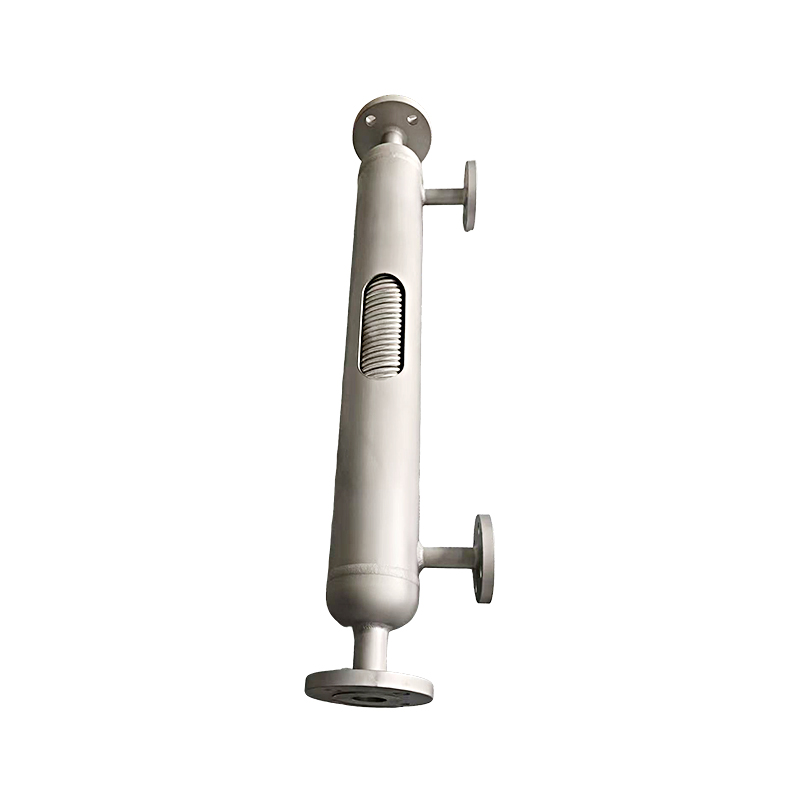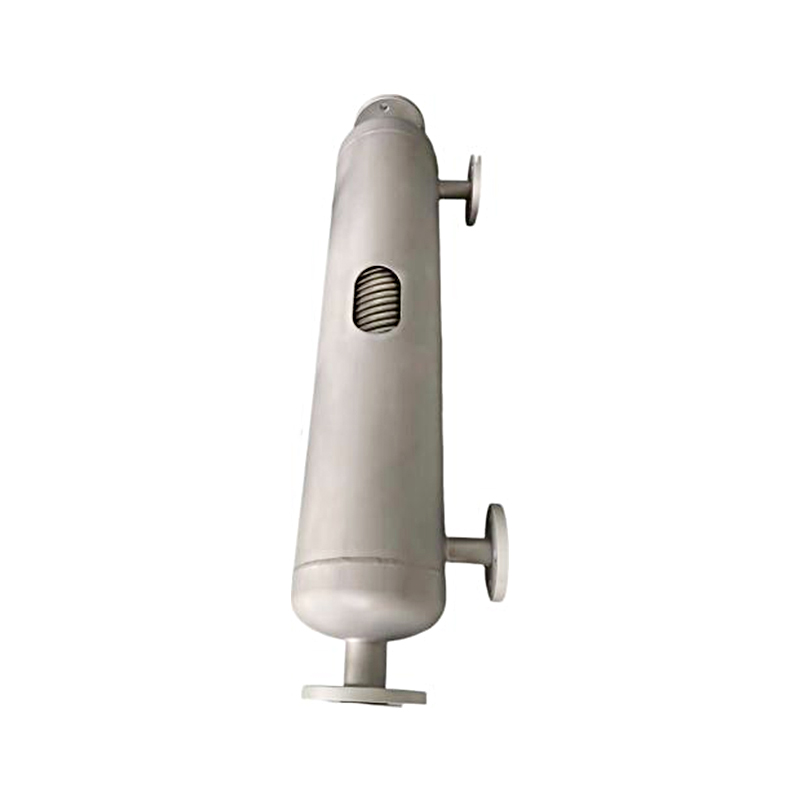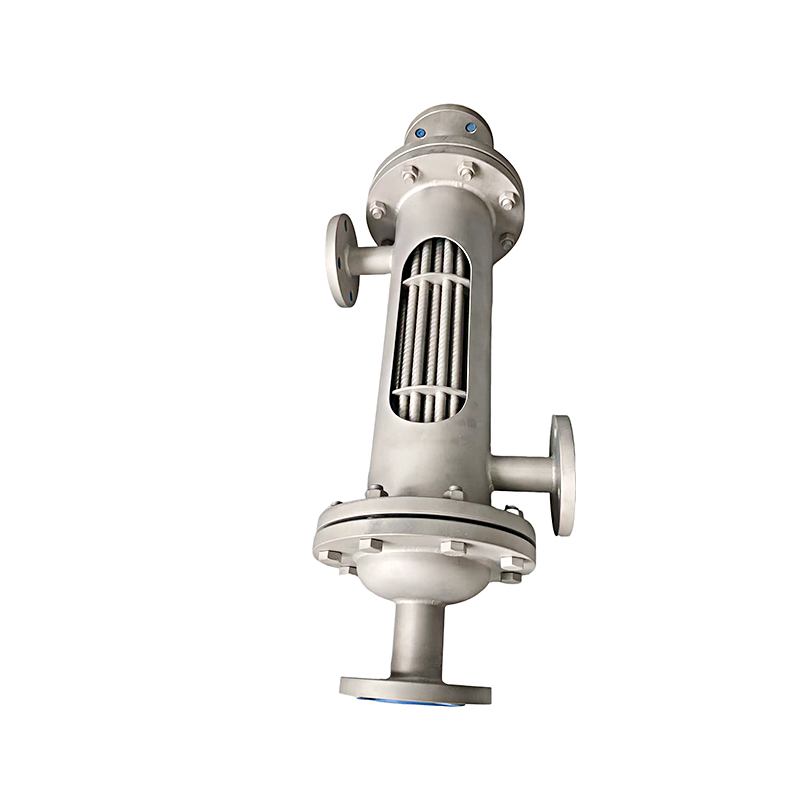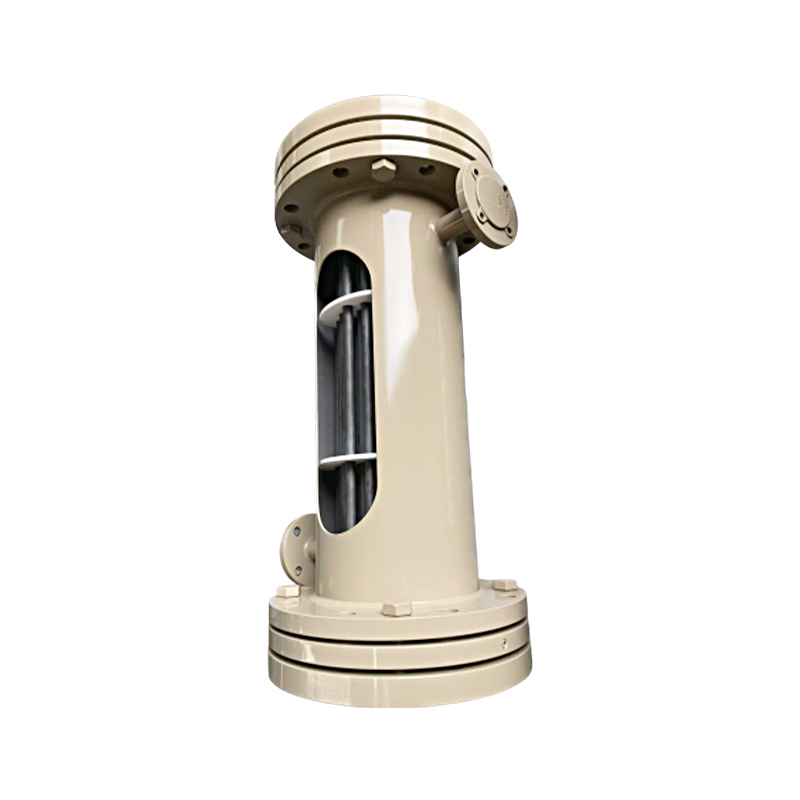How does silicon carbide achieve comprehensive resistance to strong acids and alkalis?
Release Time : 2025-09-10
Faced with extreme operating conditions and harsh media, the corrosion-resistant silicon carbide heat exchanger, with its superior material properties and revolutionary structural design, has become the ultimate solution for heat transfer in highly corrosive industries such as chemical, pharmaceutical, metallurgical, and environmental protection. It's no longer a simple replacement for traditional metal heat exchangers, but an industrial masterpiece that integrates cutting-edge materials science, fluid mechanics, and precision manufacturing. With the strength and ingenuity of silicon carbide, it redefines the boundaries of efficiency, durability, and safety.
The inherent beauty of the corrosion-resistant silicon carbide heat exchanger stems from the perfect resonance of "the ultimate material" and "the ingenious structure." Its aesthetic is primarily reflected in the cool and powerful nature of the material. Silicon carbide (SiC) is a high-performance ceramic material with a hardness second only to diamond. It possesses extremely high thermal conductivity, excellent resistance to acid and alkali corrosion, and outstanding high-temperature stability and thermal shock resistance. When this "industrial diamond" is fashioned into heat exchange components, its surface exhibits a deep, dense gray-black or dark green color. Its hard texture and cool touch exude a technological beauty born from the material's ultimate limits. It withstands the erosion of highly corrosive media like aqua regia and hydrofluoric acid, and can withstand long-term service at temperatures of hundreds of degrees Celsius without deformation or aging. This fearlessness is its fundamental aesthetic appeal. Its structural ingenuity lies in its revolutionary, spirally wound, flexible tube bundle design. Eschewing the straight tubes and baffles of traditional shell-and-tube heat exchangers, it utilizes continuous silicon carbide tubes wound in a precise spiral pattern, creating a compact and flexible tube bundle. This structure not only significantly increases the heat transfer area per unit volume, reducing the overall unit size to one-fifth or even less than traditional equipment, saving valuable space and installation costs, but also provides the device with unique fluid dynamics advantages. The asymmetric flow channel design allows for efficient mixing and heat exchange between vapor and liquid phases inside and outside the tubes, demonstrating unparalleled heat transfer efficiency, particularly under complex operating conditions such as vapor-liquid condensation and evaporation.
Its unique characteristics are rooted in the in-depth integration of "extreme corrosion resistance," "high efficiency and compactness," and "self-cleaning and long life." Its core feature lies in the revolutionary application brought about by its "extreme corrosion resistance." The corrosion-resistant silicon carbide heat exchanger can withstand virtually all environments with strong acids, bases, strong oxidizing agents, and organic solvents, completely resolving the industry pain point of rapid corrosion, leakage, and failure of metal heat exchangers in corrosive media. Whether used for reaction heat recovery in chemical production, solvent condensation in pharmaceutical processes, or waste heat recovery from electroplating wastewater, it operates stably, ensuring production safety and environmental compliance. Its "high efficiency and compactness" achieve a dual advantage in space and efficiency. Its unique spiral winding structure and highly thermally conductive silicon carbide material enable a heat transfer coefficient far exceeding that of conventional equipment. This significant reduction in size not only reduces equipment footprint and installation difficulty, but also reduces system holdup and thermal inertia, resulting in faster response and significant energy savings.
"Self-cleaning and long life" embodies its economic value. The corrosion-resistant silicon carbide heat exchanger's baffle-free design eliminates dead spots and stagnant areas, fundamentally eliminating the accumulation of dirt. Its unique, patented tangential feed structure further optimizes fluid distribution and reduces deposits. The flexible tube bundle design effectively absorbs stress generated by pipe vibration and hot and cold cycling, preventing fatigue cracking. The fully welded construction ensures the integrity of pressure-bearing components and withstands high temperatures and pressures. These features combine to make the device virtually maintenance-free, with a service life far exceeding that of traditional heat exchangers, providing users with long-term reliable operation and extremely low overall cost of ownership.
The corrosion-resistant silicon carbide heat exchanger is a "thermal fortress" for extreme environments. Its tough silicon carbide structure resists the dual attacks of corrosion and high temperatures; its intelligent spiral winding structure weaves an efficient heat transfer network; and its seamless, seamless design ensures long-term cleanliness and stability. Standing tall amid the blazing flames of a chemical plant, its compact form and silent operation are a silent challenge to the limits of technology. Choosing a corrosion-resistant silicon carbide heat exchanger means choosing an indestructible guarantee for demanding operating conditions. It conducts heat at high temperatures and withstands corrosion. Utilizing cutting-edge materials and design, it makes the impossible possible. It is the core engine for achieving green, efficient, and sustainable development in high-corrosion environments for modern industry.
The inherent beauty of the corrosion-resistant silicon carbide heat exchanger stems from the perfect resonance of "the ultimate material" and "the ingenious structure." Its aesthetic is primarily reflected in the cool and powerful nature of the material. Silicon carbide (SiC) is a high-performance ceramic material with a hardness second only to diamond. It possesses extremely high thermal conductivity, excellent resistance to acid and alkali corrosion, and outstanding high-temperature stability and thermal shock resistance. When this "industrial diamond" is fashioned into heat exchange components, its surface exhibits a deep, dense gray-black or dark green color. Its hard texture and cool touch exude a technological beauty born from the material's ultimate limits. It withstands the erosion of highly corrosive media like aqua regia and hydrofluoric acid, and can withstand long-term service at temperatures of hundreds of degrees Celsius without deformation or aging. This fearlessness is its fundamental aesthetic appeal. Its structural ingenuity lies in its revolutionary, spirally wound, flexible tube bundle design. Eschewing the straight tubes and baffles of traditional shell-and-tube heat exchangers, it utilizes continuous silicon carbide tubes wound in a precise spiral pattern, creating a compact and flexible tube bundle. This structure not only significantly increases the heat transfer area per unit volume, reducing the overall unit size to one-fifth or even less than traditional equipment, saving valuable space and installation costs, but also provides the device with unique fluid dynamics advantages. The asymmetric flow channel design allows for efficient mixing and heat exchange between vapor and liquid phases inside and outside the tubes, demonstrating unparalleled heat transfer efficiency, particularly under complex operating conditions such as vapor-liquid condensation and evaporation.
Its unique characteristics are rooted in the in-depth integration of "extreme corrosion resistance," "high efficiency and compactness," and "self-cleaning and long life." Its core feature lies in the revolutionary application brought about by its "extreme corrosion resistance." The corrosion-resistant silicon carbide heat exchanger can withstand virtually all environments with strong acids, bases, strong oxidizing agents, and organic solvents, completely resolving the industry pain point of rapid corrosion, leakage, and failure of metal heat exchangers in corrosive media. Whether used for reaction heat recovery in chemical production, solvent condensation in pharmaceutical processes, or waste heat recovery from electroplating wastewater, it operates stably, ensuring production safety and environmental compliance. Its "high efficiency and compactness" achieve a dual advantage in space and efficiency. Its unique spiral winding structure and highly thermally conductive silicon carbide material enable a heat transfer coefficient far exceeding that of conventional equipment. This significant reduction in size not only reduces equipment footprint and installation difficulty, but also reduces system holdup and thermal inertia, resulting in faster response and significant energy savings.
"Self-cleaning and long life" embodies its economic value. The corrosion-resistant silicon carbide heat exchanger's baffle-free design eliminates dead spots and stagnant areas, fundamentally eliminating the accumulation of dirt. Its unique, patented tangential feed structure further optimizes fluid distribution and reduces deposits. The flexible tube bundle design effectively absorbs stress generated by pipe vibration and hot and cold cycling, preventing fatigue cracking. The fully welded construction ensures the integrity of pressure-bearing components and withstands high temperatures and pressures. These features combine to make the device virtually maintenance-free, with a service life far exceeding that of traditional heat exchangers, providing users with long-term reliable operation and extremely low overall cost of ownership.
The corrosion-resistant silicon carbide heat exchanger is a "thermal fortress" for extreme environments. Its tough silicon carbide structure resists the dual attacks of corrosion and high temperatures; its intelligent spiral winding structure weaves an efficient heat transfer network; and its seamless, seamless design ensures long-term cleanliness and stability. Standing tall amid the blazing flames of a chemical plant, its compact form and silent operation are a silent challenge to the limits of technology. Choosing a corrosion-resistant silicon carbide heat exchanger means choosing an indestructible guarantee for demanding operating conditions. It conducts heat at high temperatures and withstands corrosion. Utilizing cutting-edge materials and design, it makes the impossible possible. It is the core engine for achieving green, efficient, and sustainable development in high-corrosion environments for modern industry.








